How to Determine Your YAN
YAN is the summation of both the inorganic (ammonia, NH4+) and organic (primary amino nitrogen, PAN; free amino nitrogen, FAN) components that can be utilized by the yeast.
Therefore, to figure out your YAN for a given lot of juice or must, you must add the two numbers together. Need help wrapping your head around this concept? Give this calculation worksheet a try!
Calculate Your Starting YAN
Let’s say you measured 45 mg N/L of inorganic nitrogen, or ammonia ions through one analysis. For that same lot of juice, you measure 68 mg N/L of PAN. Your starting YAN is:
45 mg N/L + 68 mg N/L = 113 mg N/L.
Calculate Your Total YAN
Your total YAN can be calculated by adding the starting YAN (see above) from the fruit plus nitrogen contributed by nutrient additions made during primary fermentation.
Nitrogen contributions of a nutrient product (e.g., GoFerm) are based on the addition. For example, DAP contributes ~2 mg N/L for each 1 g/hL addition rate. Therefore, if you add 10 g/hL of DAP to the fermentation, you are adding ~20 mg N/L to the starting YAN.
Using the following nitrogen addition rates from Scott Labs, see if you can determine the total YAN that will go into the fermentation.
| Addition Rate | N Contribution | Addition Rate | N Contribution |
|---|---|---|---|
| GoFerm 30 g/hL | 10 mg N/L | Fermaid O 25 g/hL | 10 mg N/L |
| Fermaid K 25 g/hL | 25 mg N/L | DAP 1 g/hL | 2 mg N/L |
| Starting YAN | Nutrient Additions | Total YAN |
|---|---|---|
| 97 mg N/L | GoFerm 30 g/hL Fermaid K 25 g/hL |
97 + ____ + ____ = ____ |
| 172 mg N/L | GoFerm 30 g/hL Fermaid O 10 g/hL Fermaid K 25 g/hL |
172 + ____ + ____ + ____ = ____ |
| 105 mg N/L | GoFerm 30 g/hL Fermaid K 25 g/hL DAP 15 g/hL |
105 + ____ + ____ + ____ = ____ |
| 258 mg N/L | GoFerm 30 g/hL Fermaid O 30 g/hL |
258 + ____ + ____ = ____ |
| 378 mg N/L | GoFerm 30 g/hL Fermaid O 25 g/hL |
378 + ____ + ____ = ____ |
| 62 mg N/L | GoFerm 30 g/hL Fermaid K 25 g/hL DAP 27 g/hL |
62 + ____ + ____ + ____ = ____ |
Answers: 132 mg N/L; 211 mg N/L; 170 mg N/L; 280 mg N/L; 398 mg N/L; 151 mg N/L
References
Scott Labs Handbook. Available at: http://www.scottlab.com/pdf/ScottlabsHandbook2017.pdf
